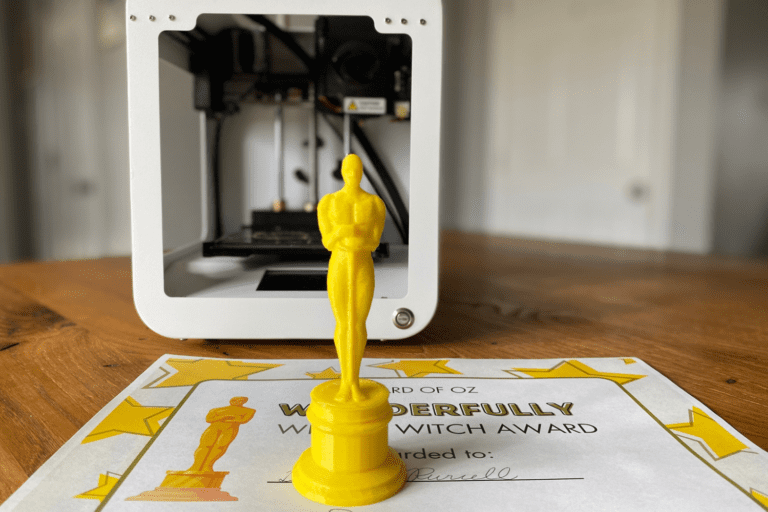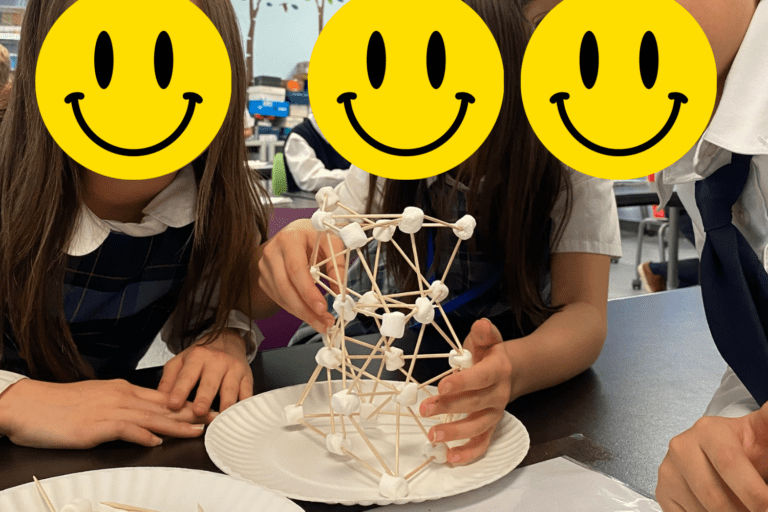How to Conduct a Science Experiment with Packing Peanuts
Looking for an easy science experiment that explores solubility and sustainable packaging? In this simple sustainability science experiment, you’ll discover the different properties of compostable versus traditional packing peanuts, using supplies you already have at home. Complete with a video tutorial in both English and Spanish, along with a printable for younger learners, this science lesson is suitable for scientists of all ages!

If you’ve ever wondered some packing peanuts look and feel different than others, this post is for you! As consumers have become more aware of the negative impacts various materials have on the environment, industry has responded by creating shipping materials that are eco-friendly and compostable. Exploring the properties of different types of packing peanuts make for a fantastic chemistry and materials science experiment that can introduce learners to the principles of solubility.

What is Solubility?
Solubility refers to the ability of a substance, called the solute, to dissolve in a solvent to form a homogeneous mixture called a solution. Solubility is dependent on various factors such as temperature, pressure, and the chemical properties of the solute and solvent.
That’s a whole lot of chemistry terminology I just threw out at you. Here’s a practical example of what I mean:
Salt (a solute) can dissolve in water (a solvent) to form a saltwater solution, while oil (another solute) does not dissolve in water ( a solvent) and forms a separate layer. The inability for oil to dissolve in water can be easily demonstrated with my Discovering Density experiment.
The degree of solubility can vary from very soluble (a large amount of solute can dissolve in a small amount of solvent) to insoluble (no amount of solute can dissolve in a solvent). In our examples of salt and water, salt is very soluble in water, hence the ability for our oceans to be made up of saltwater. Oil is insoluble in water, since the molecular structure of oil does not allow it to disperse in water.
Solubility is an important concept in chemistry and is the key factor to why some packing peanuts are soluble in water, while others are insoluble.
The Science of Traditional vs. Compostable Packing Peanuts
Traditional packing peanuts are made from petroleum products. These petroleum-based packing peanuts are created from polystyrene, a synthetic material derived from petroleum, and are not biodegradable. They are also insoluble in water. They are commonly used in shipping to protect fragile items and contribute to environmental pollution.
Compostable packing peanuts, on the other hand, are made from plant-based biodegradable materials such as corn starch, potato starch, or wheat starch. These materials are designed to break down quickly in compost or other natural environments, reducing waste and pollution. Due to their molecular makeup, starch-based packing peanuts are soluble in water.

How Can You Tell if Packing Peanuts are Compostable?
There is an easy test to determine if the packing peanuts you have are made of compostable starch or non-compostable polystyrene. Follow these simple steps to determine which types of packing peanuts you have:
- Dip the end of the packing peanut in water
- If the end feels sticky, it’s made of starch and is compostable!
- If the end just feels wet, with no change to the packaging itself, its the traditional petroleum-based type.
In addition, many compostable packing peanuts have more of an off-white coloring, while petroleum-based peanuts are a bright white color.

Science Experiment with Packing Peanuts
Due to the solubility difference between petroleum-based and starch-based packing peanuts, these materials make for an easy and excellent science experiment. In order to get started with this chemistry exploration, you’ll need to gather a few supplies.
Materials Needed for the Packing Peanuts Science Experiment
- Polystyrene packing peanuts (doesn’t have to be in the traditional “peanut” form – any white, “styrofoam-like” packing material will do!)
- Starch packing peanuts
- 2 clear glass containers
- Water
- Spoon
- “Let’s Compare Packaging” printable (for preK – 5th grade learners)
Free “Let’s Compare Packaging” Science Printable
Want a free science printable to guide your learners through the solubility science lesson involving different types of packing peanuts? Simply enter your name and email address below!
Instructions for the Packing Peanuts Science Experiment
Once you’ve gathered the supplies needed, it’s time to experiment! Here are simple, step-by-step instructions to conduct the packing peanuts science experiment:
- Make observations about each type of packaging. Note the color, texture (rough or smooth) and relative weight (light or heavy) of each material.
- Create a hypothesis about each type of packaging. Prompt your learners to complete this sentence for each: “If I place the ___________ packaging in water, it will…..”
- Fill each glass jar approximately half full of water.
- Place the polystyrene packaging in one glass of water and the starch packaging in the other.
- Stir each container for approximately a minute.
- Observe any changes that occur.
- Complete the discussion questions on the “Let’s Compare Packaging” printable (younger learners) or the questions at the end of the video (upper elementary – middle school).
Packing Peanuts Science Experiment Videos in English and Spanish
Watch the following videos, created in English and Spanish, to walk your learners through the steps of the packing peanuts science experiment.
As your learners work their way through the discussion questions, remind them that polystyrene packaging is an oil-based product. You can then prompt them with the question, “Do oil and water mix?” This may help the to answer why petroleum-based packaging doesn’t dissolve in water.
This simple sustainability science lesson is a terrific way to get your learners comfortable with the steps of the scientific method. It also will get them thinking about the environmental impact packaging has on the planet, and may foster some excellent dinner table conversations!

More STEM Activities with Compostable Packing Peanuts
Looking for more ways to use compostable and traditional packing peanuts in your STEM and science lessons? Check out these free compostable packing peanuts STEM activities for kids on my sister site, Raising Global Kidizens.
Was This Post Helpful? Please Share!
If you find value in this experiment, please share it with your friends and educators! Collectively, we can make the science of sustainability accessible to all learners.

Exploring Solubility: A Packing Peanuts Science Experiment

Explore the basics of solubility with this simple science experiment using traditional and compostable packing peanuts.
Materials
- Traditional packing peanuts (petroleum-based peanuts or any “styrofoam-like” packaging will do
- Compostable packing peanuts (also called starch packing peanuts)
- 2 clear glass bowls, jars, or drinking glasses
- 1 spoon
- “Let’s Compare Packaging” free printable
Instructions
- Make observations about each type of packaging. Note the color, texture (rough or smooth) and relative weight (light or heavy) of each material.
- Create a hypothesis about each type of packaging. Prompt your learners to complete this sentence for each: "If I place the ___________ packaging in water, it will....."
- Fill each glass jar approximately half full of water.
- Place the polystyrene packaging in one glass of water and the starch packaging in the other.
- Stir each container for approximately 1 minute.
- Observe any changes that occur.
- Complete the discussion questions on the "Let's Compare Packaging" printable (younger learners) or the questions at the end of the video (upper elementary - middle school).
Notes
Grab your free copy of the “Let’s Compare Packaging” science printable to guide your learners through this experiment.
Recommended Products
As an Amazon Associate and member of other affiliate programs, I earn from qualifying purchases.








2 Comments
Comments are closed.